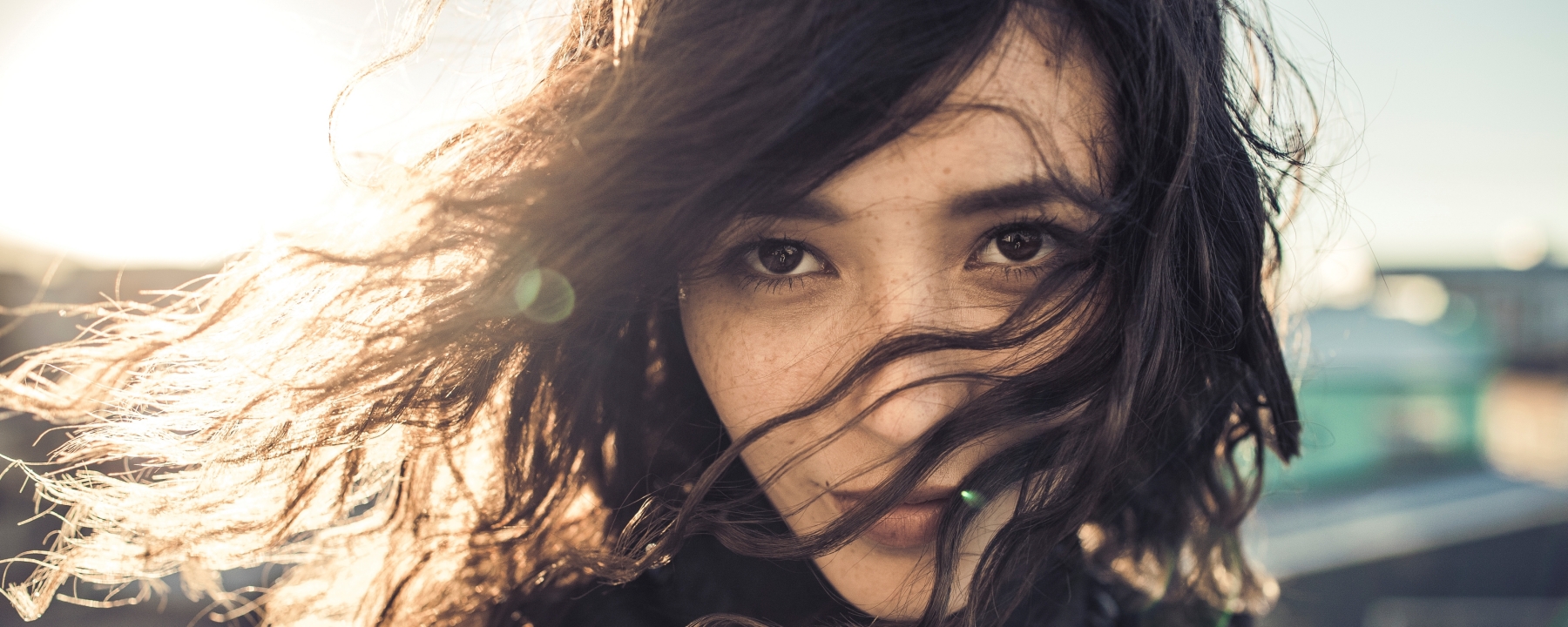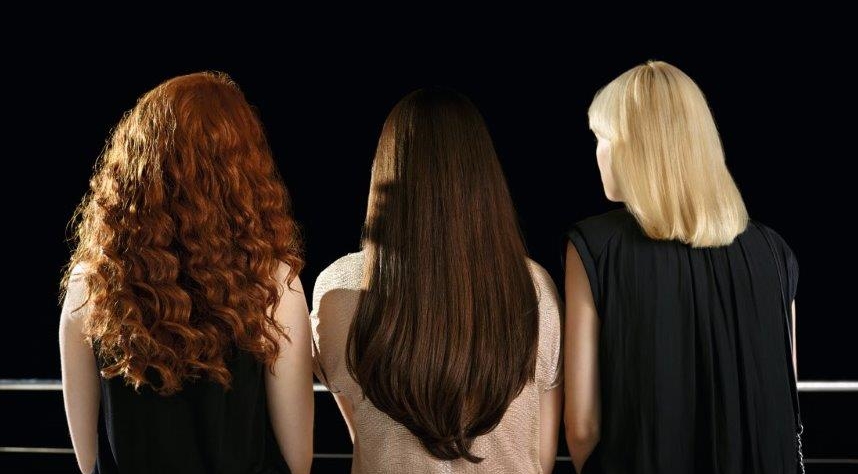
The skin
Skin appendages – it’s a hairy affair
What do palms of hands, lips, soles of feet, fingernails and toenails all have in common? Not a single hair grows on them, that’s for sure! In fact, they are the only parts on the body’s surface that are guaranteed to be hairless. The other 96% of the skin’s surface can grow a lot of hair. Depending on the person it can be quite noticeable.
This doesn’t excite everyone, but wax studios and epilator manufacturers are happy about it. What evolved millions of years ago in nature as a basic need for survival, is now starting to cause conflicts with today's ideals about beauty - especially since some of the important functions needed in the past, such as protecting us from the cold, are not needed in today’s day and age.
So why are we addressing this topic? Scientifically speaking, since hair is derived from skin, it is also part of skin. Biologists use the somewhat awkward terms skin appendages or adnexa. Even our fingernails and toenails are examples of skin appendages.
Skin Appendages – A Hairy Situation
Even to this day, hair still helps us to protect our skin and body. The hair on our head protects us against a sunburned scalp. It also helps regulate our body temperature by preventing heat loss during cold weather while cooling us down when it gets hot. Eyebrows and eyelashes prevent foreign particles from entering the eye and the hairs in our nose filter the air before it enters our lungs.
Skin appendages are primarily made up of keratin, a protein found in the skin. The hair shaft is the visible part of the hair that sticks out of the skin. Even though it consists of dead cells, hair plays an important role on how we sense life and how we perceive beauty. The hair follicle is a tunnel-shaped structure enclosing the hair shaft that is deeply embedded in the skin and anchors the hair. The hair sheath surrounds the follicle like a sleeve. Sebaceous glands open into the hair follicle to secrete sebum lubricating the hair with a protective oily or waxy layer. The hair bulb is found at the end of the follicle. The hair root is found in the hair bulb and is where the hair is produced. The hair bulb also contains the hair papilla which plays an important role in hair formation and growth, and in supplying the hair bulb with important nutrients. Hair is formed between the border of the hair papilla and hair bulb.
Even though structures of a hair follicle are very thin and fine, each one has a small muscle attached to it. It can actually make your hair stand up straight and causes tiny elevations on your skin. So, every time your hair “stands on end” and you get goose bumps, know that thousands of miniature muscles are working together at that very moment.
By the way, did you know that the texture of hair is quite diverse? Peach fuzz, known as vellus hair, is the name of the fine, short hairs that cover much of the body. You probably would recognize them as the thin, downy hair you see on the skin of babies and toddlers. Terminal hair is the thick, long, pigmented hair found on the top of your head, beard, eyelashes, eyebrows and pubic hair. It also includes male body hair found on the chest or abdomen.
Numbers game
- Hair can grow on 96% of the skin surface
- On average, a person loses 70 to 100 hairs per day
- Hair on the scalp can grow for several years and can grow to over a meter long
- Eyelashes and eyebrows only grow for about 100 to 150 days, which is why they stay relatively short
Gold, brown or black - hair color depends on the different levels of melanin in the stratum corneum. An abundance of eumelanin gives the black-brown color while phaeomelanin gives the red-gold color. The amount and type vary from one person to another. The production of melanin typically decreases as we get older. At the same time, air is increasingly trapped in the hair. The result: it loses its color and turns gray or white.
What do you like best, smooth or curly hair? One theory is that the shape of the hair's cross-section determines the amount of curl. If it’s round, the hair grows straight, e.g. with many Asians. The more oval the cross section of the hair gets, the curlier the hair is.
A Lifetime of Constant Growth
So, how does hair grow? New cells are constantly forming in the hair bulb. They stick together and harden. As new cells are formed and attach to the hair from below, it is gradually pushed out of the skin. A hair on your head grows on average at a rate of about one centimeter every month. Facial hair, and especially eyebrows, eyelashes and body hair grow more slowly.
As long as cells form in the hair bulb, the hair grows. There are 3 stages of the hair growth cycle: Anagen is the growth phase; catagen is a transition phase in which hair stops growing; and telogen is the resting phase, in which no growth occurs, and the hair is finally shed. At any point in time, about 90 percent of all our hair is in a growth phase. The growth phase will last depend on where the hair grows: hair on the scalp can grow for several years. This is why the hair on our head can grow to over a meter long. The growth phase is especially short for eyelashes, eyebrows or ear and nose hair. These hairs only grow for about 100 to 150 days, which is why they stay relatively short.
The best protection against hair loss is going bald-
Telly Savalas
Actor, aka Lieutenant Theo Kojak in "Kojak"
At the end of the growth phase, the hair root separates from the papilla, which is a process that takes about two to four weeks. After that, the hair is cut off from the blood supply. It is gradually pushed out of the skin and eventually falls out. After a few weeks or even months, new hair cells multiply at the base of the "empty" hair follicle to form new hair, and the hair’s growth cycle starts all over again.
Hair Loss - a Hairy Affair
Due to the phases of the hair growth cycle, we are constantly losing hair - 70 to 100 hairs a day is quite normal. But because new hair constantly grows back at the same time, this natural hair loss is barely noticeable. Most people, especially women, believe that thick, healthy hair is beautiful. That’s why alarm bells go off for many people when their hair starts to fall out at a higher rate. This can happen when, e.g. our hormones change or as we get older or when the hair root is damaged during the growth phase. To prevent hair loss, a healthy diet, a good hair care regimen and choosing carefully how you style your hair can help.
Hair loss (alopecia) can be temporary or permanent. Excessive hair loss can cause baldness. Some types of alopecia can disappear, e.g. following chemotherapy and hair usually grows back. However, baldness can also be permanent - a typical example is the genetically determined gradual hair loss in men. Men might get lucky if baldness happens to be trending at that time. If not, even if it might not be nice, it’s still bearable. The American actor Telly Savalas, alias Detective Lieutenant Kojak, says in action crime drama television series "Kojak": "The best protection against hair loss is going bald ..."

